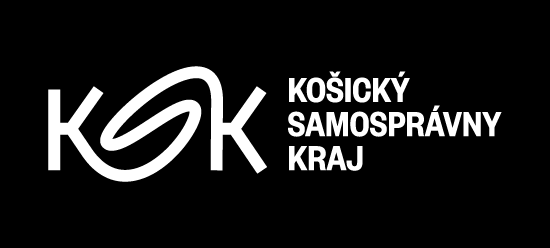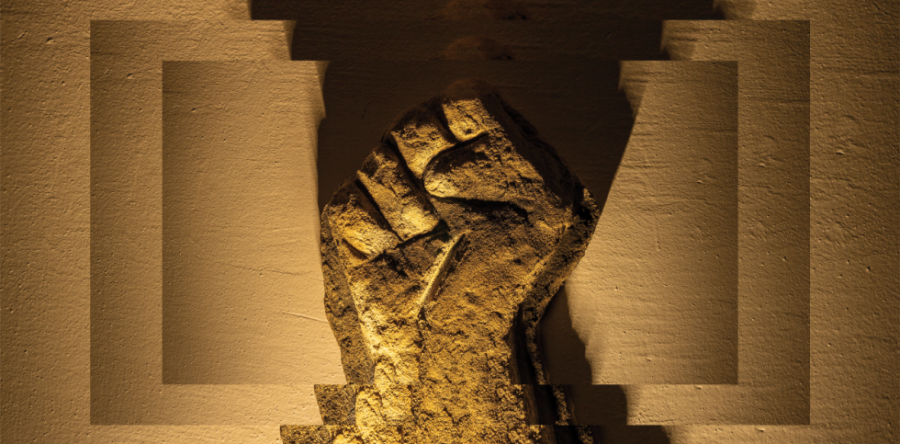guest: MARTIN PIAČEK / It is like a small version of paradise, povedala
opening: November 15, 2018 / 6 p.m.
duration: November 16, 2018 – March 31, 2019
East Slovak Gallery, Hlavná 27
curator: Ivana Moncoľová
This exhibition by Radovan Čerevka, an important sculptor and artist from the middle generation, brings viewers works with multiple meanings. As the author of a post-production strategy, he presents sculptural works which use prefabricated modelling blocks. The contexts which he gives the viewer through these devices, however, put across a message charged with ambiguous information. The large, spatial large visuality of the works plays to lovers of military history and weapons. He lures them by overstatement into an installation reminiscent of a museum, reconstructing historical truths with a scientific and fantastical approach (and enthusiastically, too). The context of examining a quasi museum item is helped by the gallery’s exhibition space itself, which wavers between catacombs and concrete shelter. The central motif of these works is war, military conflict, information war, a post-war state of war. Their common denominator is simulacra, information, its spread, verifiability, interpretation, ambiguity, falsehood – and playing on fake news, truisms, appropriating the truth in historical and critical revisions of facts.
The large-scale object Zvezda (2017), dominates the entrance to the gallery space, exhibited for the first time in Slovakia. The large-scale structure in the shape of a star copies the logo of the cult Russian manufacturer of plastic models. The structure is filled with imitations of clay tablets with the “codes” of the reproduced prints of models of soldiers, shells, weapons and all the accessories needed to build a model. The tablets in the museum space, transcripts of an ancient language, carry a message which we gradually come to. In further works referring to the largest company Zvezda, which produces models (true to life details) of weapons, soldiers and military equipment – mainly from the Second World War, these tablets are now devoted to the Russian army as part of its patriotic education. Čerevka also involves in the interpretation of the work the organisers of a Russian competition in building dioramas, where he wants to enter the work “Boeing 777” (2017), which refers to the civilian aeroplane owned by Malaysia Airlines shot down over Ukrainian territory by Russian Buk missiles, which Russia continues to deny. The work “Boeing 777” (2017) has the appearance of a lawn in the shape of the logo of the competition’s main sponsor – a star – on which the wreckage of the aeroplane is drawn in detail. The replica of a model box, before being used potentially to build a model, stands above them. If you want to find out the meaning of “build it yourself”. Radovan Čerevka also publishes his communication with the Russian organiser of the competition – the regional head of the Patriot club, which did not accept the model/piece of art in the competition. The artist also points to the spread of Russian propaganda using the available model aimed at a wide age range.
The work “Polite People” (2018) is an oversized quotation of the box, once again, of a model (for young people), which presents soldiers of the Russian army as good, honest people. The scale and level defines how it should be read, as well as the opportunities for its visual manipulation.
The strategy of spreading subliminal information focuses on making the intention unclear, which allows subliminal thoughts to be accepted. Like fake news, the artist focuses on the way his works gain meaning by working in detail on the visual side, and making unclear the precise interpretation of the intention behind the work.
The work “Dramasks” (2017) refers to the pretence of history. The fetishization of weapons and the quantity of military metal refer to the diorama, which we can consider without any critical perception as a found and reconstructed museum/artistic piece with a historical value, which documents the existence of African masks crossed with fighter planes. The work points to the problem of relativizing historical facts, as well as the issue and impossibility of being reread in a society which has problems with the use of historical factography burdened with various spectres of political propaganda.
The strategy of the logics of museum presentation applied to works reminiscent of discovered fossils is also presented in his latest works, displayed for the first time in this exhibition. The piece “Brutalist truths” (2018) is formally reminiscent of concrete slabs, part of a memorial. The information on it concerns the economics of military conflicts. The equivocality of the name refers to a homage to brutalist architecture and cast concrete as a connected aesthetic. It also reveals the brutal/real truth about the number of weapons needed for a military conflict.
Works which vary the topic of the “problem with the truth” of today’s society include “Untitled – Detection Fields” (2018) and “Reconstruction of a Battlefield” (2018). The works look like discovered fossils, protected for their museum value. Instead, from the layers of dust emerge weapons and parts of weapons with the appearance of the skeletons of ancient lizards. The principle behind these works reveals invented history, if we compare it with history to date. If we look at it with a prognostic principle, the artist gives us an invented future civilisation predictive of possible future history.
Čerevka takes thinking about truth ad absurdum in his installation combined with a projection entitled “Ezomagia In: Huntington, Samuel P.: The Clash of Civilisations, Touchstone, NYC: 1997, pp 381–388” (2018). The long title of the work is a bibliographical reference to a work from 1997 which deals with the clash of civilisations (Christian, European civilisation and Muslim civilisation). Čerevka praises the theses of Huntington’s wide-ranging book, in which the author predicts world orders and conflicts in around 2010. He elicits from it strategies for starting conflicts and predicting history, its end and the advantages and disadvantage of its course. Čerevka has transposed these theses into tarot signs. He has had them made into a tarot divination. The installation includes the tarot symbols of this fortune-telling, turned into stone reliefs, as well as a video from the fortune-telling process. Radovan Čerevka polemicizes with the social situation of the present day, in which even purely rational individuals escape more and more towards esoteric truths and truths outside the verifiable spectrum of reason. He pursues the idea that statements based on irrational foundations have a growing influence and weight in society. It is an under-reported fact that many serious-minded businessmen, politicians and lawyers resort to fortune-telling, white magic and protection against curses.
The installation “Landscape of Permanent Freedom” (2013) comes from the permanent collections of the East Slovak Gallery. Radovan Čerevka was the winner of the Oskar Čepan (COČ) prize for young artists under the age of 35 with this work in 2013. The name of the work paraphrases the longest military operation to date in the history of the American Armed Forces against insurgents in Afghanistan. The parallel ISAF operation, under the control of NATO, is focused on stabilising the security situation and reconstruction of the country. Both operations are still ongoing with a strikingly unclear, even pessimistic, prognosis for their successful end.
Each work concentrates various formal spectrums: from a spatial collage, through the secondary use of modelling components, to the return to sculptural modelling from artificial stone. It concentrates the principles of reconstructing the truth which lead to a power status. This is the reason the exhibition is also entitled “Power in the Museum”.
At the rear, the exhibition includes by way of contrast an installation by Martin Piaček entitled “’It is like a small version of paradise’, she said” (2018).



